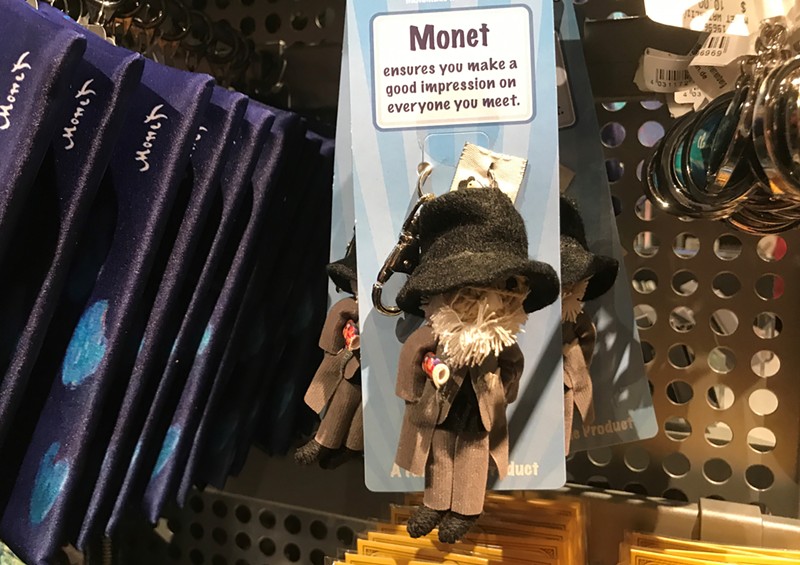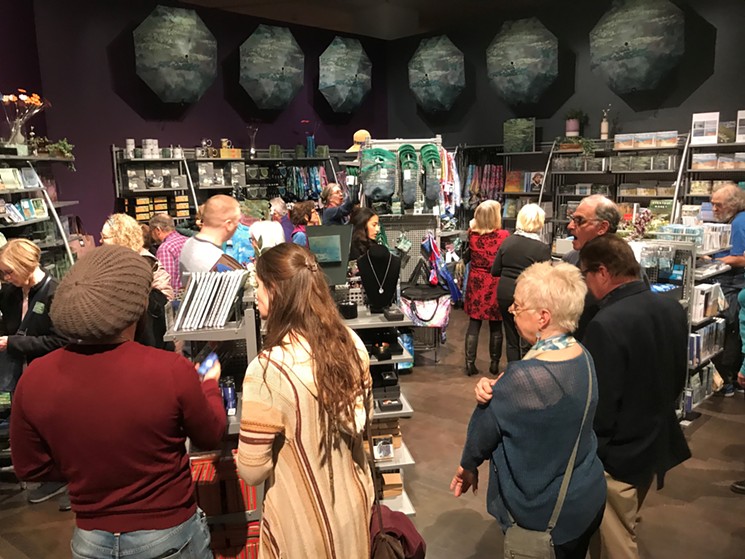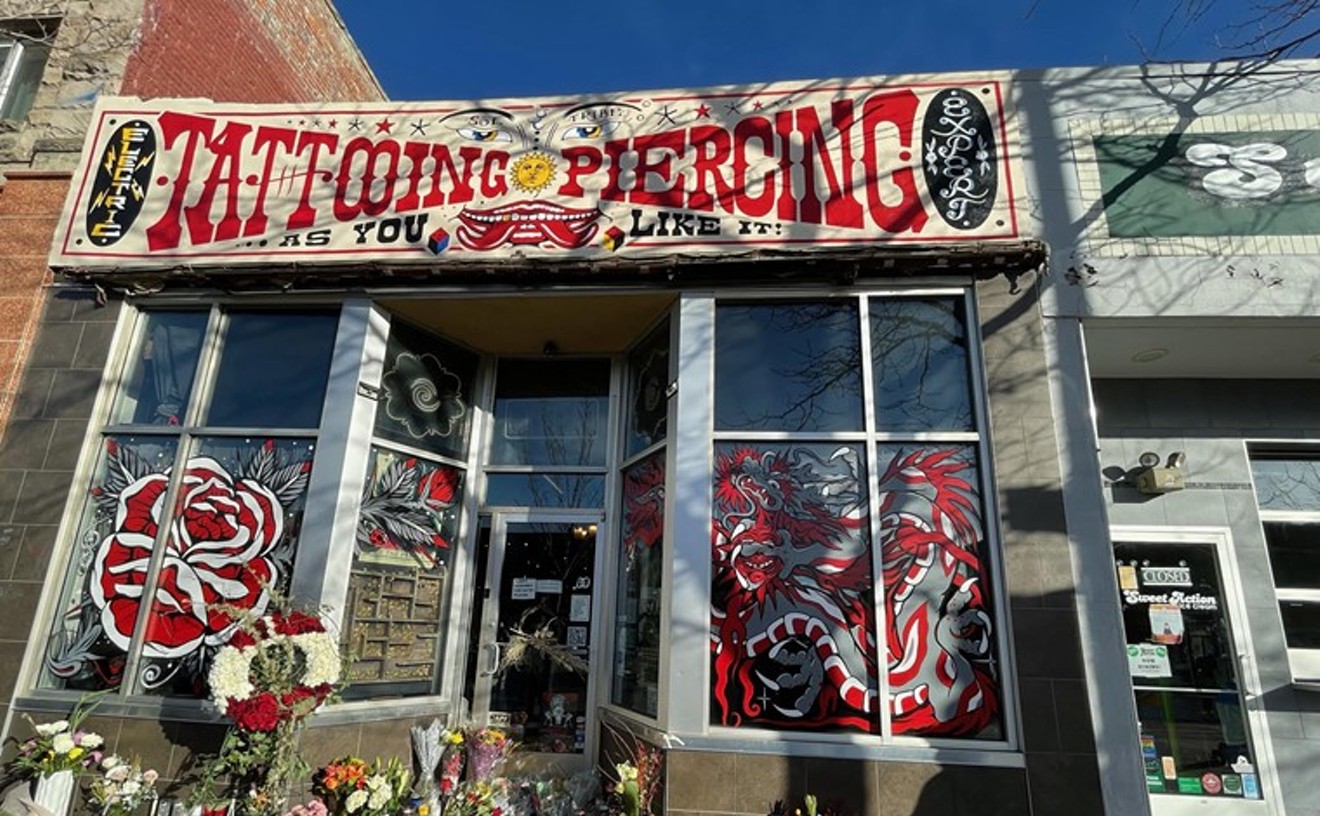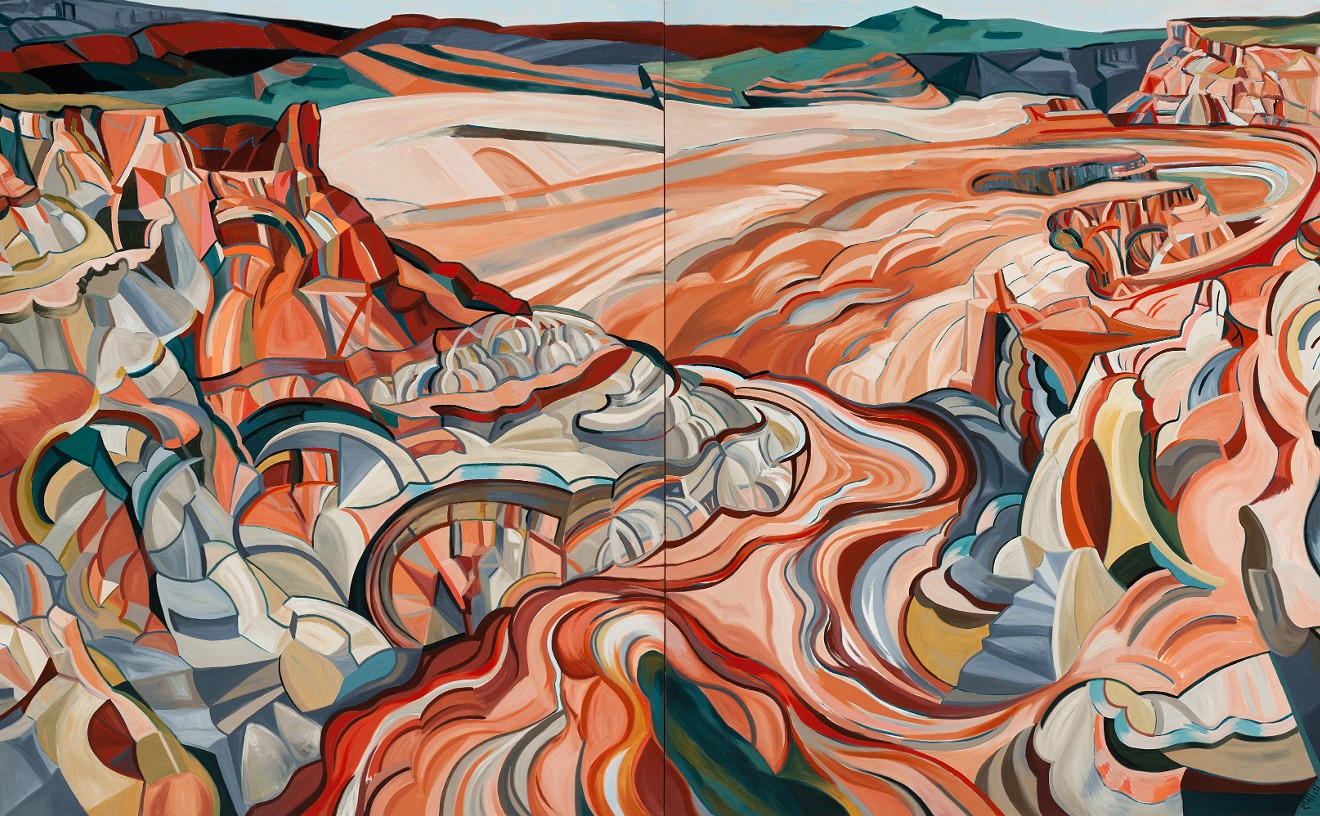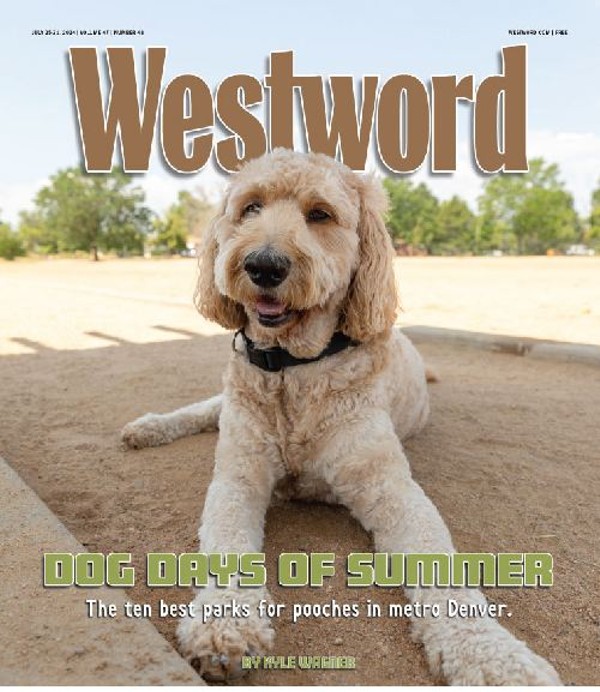Trucks have been parked outside the Denver Art Museum for weeks, loaded with Monet merchandise.
Inside, a young worker hauls a dolly stacked high with Monet puzzles through a roomy gallery of British art. He’s under the creepy watch of baby Edward, Prince of Wales, painted back in 1538 by Hans Holbein the Younger, and Jesus dying on the cross. The worker lugs his load to the crowded store at the end of the Claude Monet: The Truth of Nature exhibit, where the shelves will be restocked: “Excuse me, pardon me, excuse me.” Those puzzles won’t stay there long. On a weekday in early December, DAM patrons are eagerly browsing through the glut of water lily- and haystack-emblazoned tchotchkes — 700 separate SKUs in all.
Though expectations were high, DAM officials weren't prepared for how much Monet merch visitors would buy. Retail staff started with a third of what they thought they would ultimately sell, their usual procedure, and have been putting in roughly thirty orders a week, trying to keep up with consumer lust for the king of the impressionists. Many sellers’ warehouses are now out of stock; the DAM has gobbled up all the available product. The museum even opened up a second staging area to store merch, because the massive room with rolling shelving installed for the Star Wars and the Power of Costume exhibit back in 2016 just wasn’t big enough. Even Darth Vader can’t compete with Monet, who's also blown away Vincent van Gogh and Christian Dior.
The most popular items on sale are Monet scarves, postcards, CDs of impressionist music from Colorado Public Radio, and the exhibit’s massive catalogue, which sells for around $50. But there are also paintings printed on eyeglass cases, watchbands and shawls. A cartoonish stuffed Monet keychain is the cutest thing in the shop. For the highbrowed, there are biographies of the artist. For kids, there are coloring books. And foodies can browse tomes of some of the artist’s favorite recipes from his garden at Giverny; Yorkshire pudding, Normandy apple tart and other regional foods offer a culinary map of where Monet lived, traveled and painted.
The retail department, comprising 26 workers and around 65 shop volunteers, is struggling. Shadia Lemus, the DAM’s senior communications manager, has been posting more job descriptions for seasonal workers on social media than she can count. Greg McKay, the associate director of retail operations, sent out a desperate email to all departments asking museum workers to come in early and stay late, volunteering time to help label, pack and prepare items for sale. Staff responded in force. Even Christoph Heinrich, the DAM’s director for the past decade, has stayed past 9 p.m., trying to meet the demand; he’s recruited his wife and child to help.
A former painter and passionate dumpster diver who got his start in retail working at corporate crafting chains, McKay joined the DAM as the main shop’s associate manager thirteen years ago. The Truth of Nature will be the museum's last big show before he retires in the summer to spend time with his grandchild. No doubt the Monet shop — which is as thoughtfully designed as the exhibit itself, and even more crowded — will be a grand finale for his career.
For retail, “Monet is a best-case scenario,” says McKay. Patrons are buying so much because “it’s a powerful exhibition...hitting them on an emotional level.”
While Monet’s soft-focus paintings have become the aesthetic equivalent of easy listening and the perfect designs to decorate a scarf or a bathrobe (both are available in mass quantities in the shop), at the time he started painting, in the late 1800s, the artist’s approach was radical.
The smart exhibit curated by Heinrich and Chief Curator Angelica Daneo walks viewers through Monet’s transformation from a representational painter to an impressionist, from his obsession with Paris to the countryside and his garden. With 120 paintings from eighty collectors, the exhibit frames Monet as an artist who rejected urban trends for nature. Far from people, he anguished over the difficulty of capturing the ever-shifting colors we too often fail to see. While Europe was rocked by wars and industrialism boomed, he found inspiration in fog, snow, water and gardens.
It’s hard to imagine the master, who spent much of his life avoiding painting humans, now walking through a gift shop jam-packed with monied obsessives standing in line and swiping credit cards to take home factory-produced replicas of his paintings on trinkets that will one day land at the nearest Goodwill. Surely, Monet would balk — or have a panic attack; some visitors might, too.
McKay — soft-spoken and not a shopper or collector himself — acknowledges that “there is some reticence about exiting through the gift shop.” But he sees his job as creating part of the story of the exhibit, a space where people of all ages can find something to take home that will remind them of their experience, bring back the emotional connection they formed with Monet at the show.
The chasm between the artist struggling throughout his life to capture the truth of nature and a throng of art appreciators picking a puzzle to complete — and, yes, they will frame it when that last piece goes in and they have made something beautiful and satisfying — is wide. But those expressions of cultural appreciation through consumption have long been the populous business of art. While mass consumption may be the opposite of the spirit of Monet’s artistic process, blockbusters and big sales keep the museum operating and allow it to exhibit more challenging, less popular works.
So through February 2, a hundred people will enter the exhibit every fifteen minutes. After experiencing one of the biggest displays of Monet’s work in decades, they’ll shop. Around 30 percent will buy a treasure. And those trucks full of Monet merchandise will keep pulling up to the docks.
[
{
"name": "Air - MediumRectangle - Inline Content - Mobile Display Size",
"component": "12017618",
"insertPoint": "2",
"requiredCountToDisplay": "2",
"watchElement": ".fdn-content-body",
"astAdList": [
{
"adType": "rectangle",
"displayTargets": "mobile"
}
]
},{
"name": "Editor Picks",
"component": "17242653",
"insertPoint": "4",
"requiredCountToDisplay": "1",
"watchElement": ".fdn-content-body",
"astAdList": [
{
"adType": "rectangle",
"displayTargets": "desktop|tablet"
},{
"adType": "rectangle",
"displayTargets": "desktop|tablet|mobile"
}
]
},{
"name": "Inline Links",
"component": "18838239",
"insertPoint": "8th",
"startingPoint": 8,
"requiredCountToDisplay": "7",
"maxInsertions": 25
},{
"name": "Air - MediumRectangle - Combo - Inline Content",
"component": "17261320",
"insertPoint": "8th",
"startingPoint": 8,
"requiredCountToDisplay": "7",
"maxInsertions": 25,
"watchElement": ".fdn-content-body",
"astAdList": [
{
"adType": "rectangle",
"displayTargets": "desktop|tablet"
},{
"adType": "rectangle",
"displayTargets": "desktop|tablet|mobile"
}
]
},{
"name": "Inline Links",
"component": "18838239",
"insertPoint": "8th",
"startingPoint": 12,
"requiredCountToDisplay": "11",
"maxInsertions": 25
},{
"name": "Air - Leaderboard Tower - Combo - Inline Content",
"component": "17261321",
"insertPoint": "8th",
"startingPoint": 12,
"requiredCountToDisplay": "11",
"maxInsertions": 25,
"watchElement": ".fdn-content-body",
"astAdList": [
{
"adType": "leaderboardInlineContent",
"displayTargets": "desktop|tablet"
},{
"adType": "tower",
"displayTargets": "mobile"
}
]
}
]

